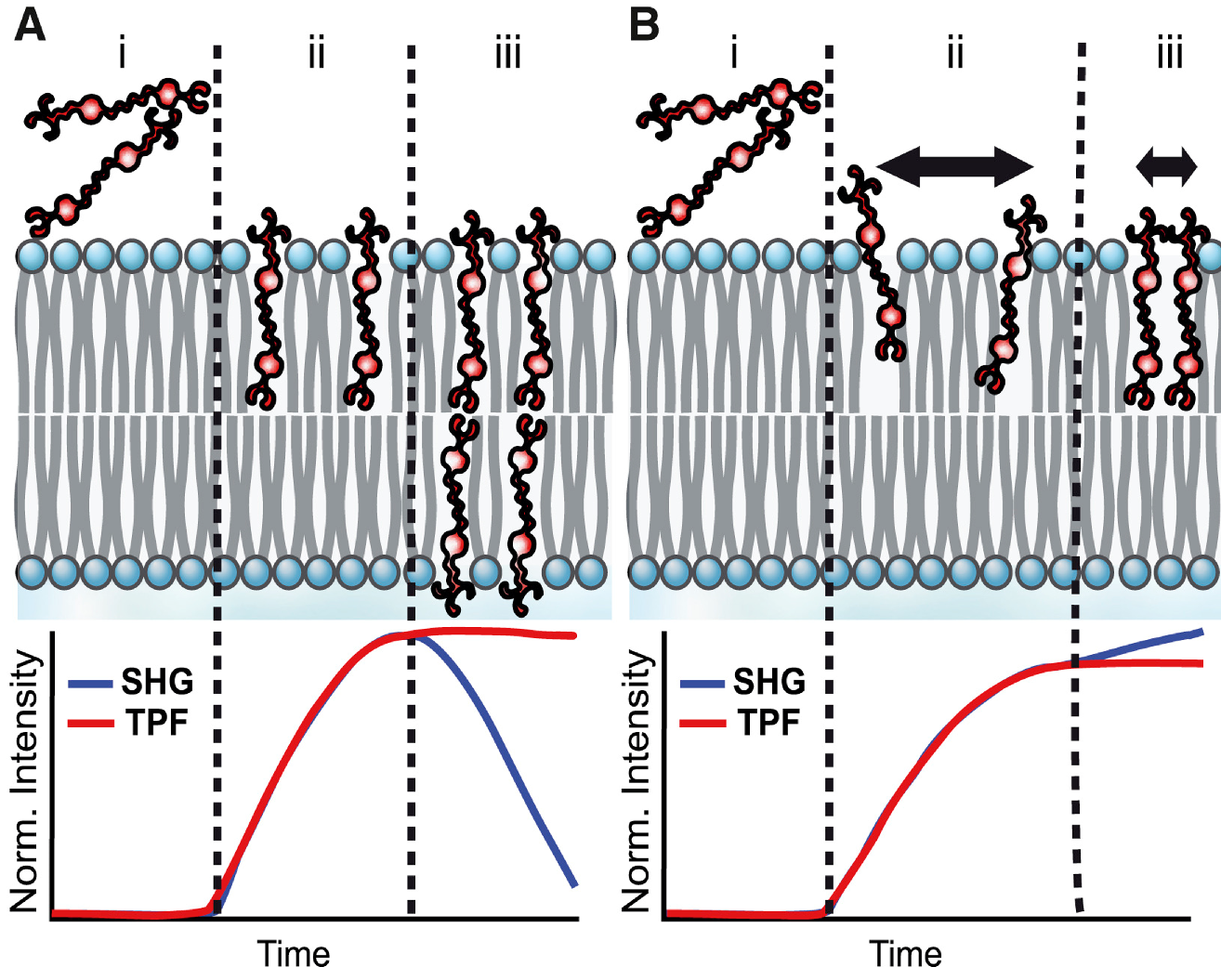The Calhoun lab’s interdisciplinary research program specializes in the application and advancement of nonlinear spectroscopy and microscopy techniques for the study of a variety of complex systems. The overarching goal in all of our work is to understand the role of environmental effects by probing electronic excited states with a specific focus on imaging dynamic interfaces.
Interactions between Biological Membranes and Small Molecules
Biological membranes are diverse, complex, and dynamic natural environments. The processes mediated by these environments are essential for life and span from molecular transport to protein function. Given the membrane's role in mediating the movement of molecules into bacterial cells, new approaches to evaluate its impact are essential for the study and advancement of antibiotics.
Through the use of second harmonic scattering, we can monitor the uptake and behavior of small molecules in the membranes of living bacterial cells. These capabilities have yielded insights into the impact of environmental ions on antibiotic binding and how small structural changes can alter molecule-membrane interactions. Overall, these techniques provide valuble information that can provide new directions in the continued pursuit of improved antibiotics.

